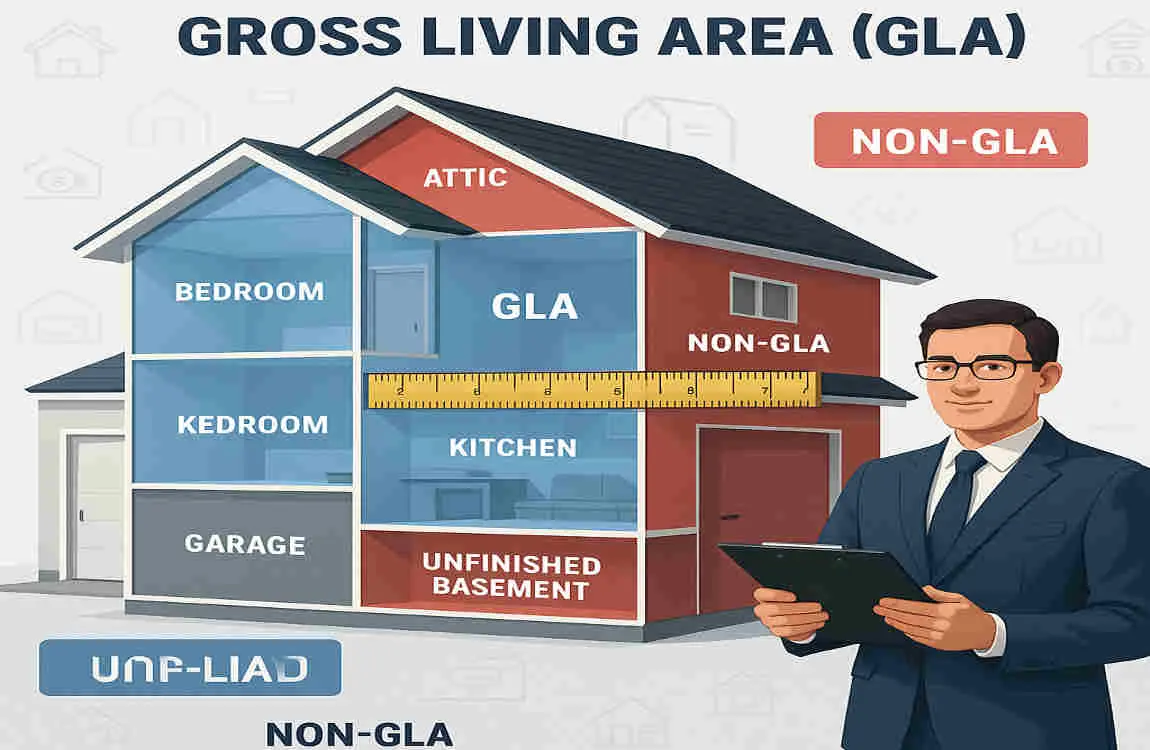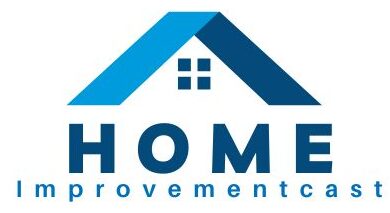Understanding real estate terms can sometimes feel like learning a new language. One such term that often confuses buyers, sellers, and even some investors is GLA. If you’ve ever wondered, “What exactly does GLA house real estate mean?” — you’re in the right place.
When diving into the world of real estate, knowing the right terms can save you time, money, and stress. GLA, or Gross Living Area, is one of those key terms that play a big role in how homes are valued and marketed. Whether you’re buying your first home, selling a property, or investing in real estate, understanding what GLA means can help you better assess a property’s true size and worth.
What is GLA in Real Estate?

Defining GLA: Gross Living Area vs Gross Leasable Area
First things first: GLA stands for Gross Living Area when talking about houses and residential properties. However, in commercial real estate, GLA typically refers to Gross Leasable Area. These two terms may sound similar, but they have distinct meanings depending on the context.
- Gross Living Area (Residential): This refers to the total finished, above-ground living space in a home. It includes bedrooms, bathrooms, kitchens, living rooms, and other finished areas where people live.
- Gross Leasable Area (Commercial): This refers to the total floor area available for rent to tenants, including hallways and shared spaces within commercial buildings.
GLA in Residential Real Estate
For houses, GLA is a critical number because it indicates the amount of usable living space the home offers. It excludes unfinished areas, such as garages, basements (unless finished and above grade), and porches. This measurement is crucial for appraisers, real estate agents, and buyers, as it directly affects the home’s value.
Official Definitions
Organizations like the Appraisal Institute and real estate boards define GLA carefully to maintain consistency. According to these standards, GLA must be:
- Finished (walls, flooring, ceiling)
- Heated and livable year-round
- Above ground level (some exceptions apply depending on local rules)
Understanding these official definitions helps avoid confusion and ensures everyone is on the same page when discussing property size.
Difference Between GLA and Other Similar Metrics
Real estate uses several terms to describe property size, and mixing them up can lead to misunderstandings. Here’s how GLA compares to some other common measurements:
You may also read (hometrack house price index).
Gross Living Area (GLA) vs Total Living Area (TLA)
- GLA: Focuses on finished, above-grade living space.
- TLA: Sometimes used interchangeably with GLA, but can include finished basement areas depending on the region.
Gross Leasable Area (Commercial Focus)
- GLA (Commercial): Includes all tenant-usable space, often including hallways and shared areas.
- GLA (Residential): Only finished living areas above ground.
Usable Area and Carpet Area
- Usable Area: The actual space a tenant or owner can use, excluding walls and columns.
- Carpet Area: The area covered by carpet inside the walls, often used in some countries to describe residential space.
Why These Differences Matter
Knowing these distinctions is crucial because they affect how you compare properties. For example, a home with a large basement might seem spacious, but if the basement isn’t finished or above grade, it won’t count toward GLA. This can impact the home’s market value and your expectations.
How is GLA Calculated for Houses?
Calculating GLA might sound complicated, but it follows a clear process. Here’s a step-by-step guide to understanding how appraisers and real estate professionals measure it:
Measure Finished, Above-Grade Living Spaces
- Only include rooms that are finished with walls, ceilings, and floors.
- Spaces must be heated and livable throughout the year.
- Measure from the outside of the exterior walls to get the perimeter.
Include or Exclude Specific Areas
- Include: Bedrooms, bathrooms, kitchens, living rooms, finished attics (if above grade).
- Exclude: Garages, unfinished basements, porches, balconies, and patios.
- Basements: Usually excluded unless finished and above ground level (varies by region).
Use Tools and Techniques
- Tape measures, laser distance meters, or digital apps can help.
- Some homeowners use floor plans or blueprints if available.
Regional Variations
Different states or countries might have slight variations in how GLA is calculated. For example, some places count finished basements as part of GLA, while others do not. Always check local standards or consult a professional appraiser for accuracy.
Importance of Knowing the GLA in Residential Real Estate

Why should you care about GLA? Here are some key reasons:
You may also read (how much does it cost to rent a house in pakistan).
Impact on Property Valuation and Sale Price
GLA is a major factor in determining a home’s market value. More living space generally means a higher price, but only if the space is finished and livable.
Influence on Mortgage Lending and Insurance Costs
Lenders and insurers use GLA to assess risk and value. A larger GLA may result in higher loan amounts or insurance premiums.
Buyer Perception and Market Comparisons
Buyers often compare homes based on square footage. Knowing the accurate GLA helps you make fair comparisons and avoid overpaying.
Real-Life Example
Imagine two homes listed at the same price, but one has 1,500 sq ft GLA and the other 1,800 sq ft. The larger GLA home might offer better value, but only if the measurement is accurate.
GLA and Real Estate Listings: What Buyers Should Look For
When browsing listings, GLA is usually mentioned, but it’s not always straightforward.
How GLA is Reported
- Often listed as “square footage” or “living area.”
- May not include garages, basements, or porches.
Potential Discrepancies and Pitfalls
- Some sellers or agents might inflate square footage by including unfinished or non-living spaces.
- Listings may not clearly indicate whether the basement or attic space is included.
Questions Buyers Should Ask Realtors
- How was the GLA measured?
- Does it include finished basements or attics?
- Can I see the appraisal or floor plan?
Verifying GLA
If you’re serious about a property, consider hiring a professional appraiser or using measurement tools yourself to confirm the GLA.
GLA in Commercial vs Residential Real Estate: Key Differences
Gross Leasable Area in Commercial Properties
In commercial real estate, GLA refers to the total rentable space a tenant can use, including private offices, retail space, and sometimes shared hallways.
Leasing Implications
Commercial GLA affects rent calculations, lease agreements, and tenant responsibilities.
Why It Matters
If you’re a residential buyer, focus on Gross Living Area. If you’re a commercial investor, understanding Gross Leasable Area is crucial for evaluating income potential.
Legal and Regulatory Considerations Regarding GLA
Building Codes and Zoning
Local laws may define what counts as living space for zoning or tax purposes.
Appraisal Standards
Organizations such as the Appraisal Institute and BOMA establish guidelines to ensure consistent GLA measurements.
Compliance Importance
Accurate GLA reporting affects property taxes, insurance, and legal documents. Misreporting can lead to disputes or financial penalties.
How to Use GLA Data to Make Smarter Real Estate Decisions
For Buyers
Use GLA to compare homes fairly and understand what you’re paying for.
For Sellers
List your property with accurate GLA to attract serious buyers and justify your asking price.
For Investors
Assess income potential and resale value by analyzing GLA alongside other metrics.
Leveraging GLA with Other Metrics
- Price per square foot: This helps evaluate whether a property is priced competitively.
- Market trends: Understand how GLA affects demand in your area.
Common Misconceptions About GLA in Real Estate
GLA Includes Every Square Foot
Not true! Only finished, above-grade living spaces count.
Garages and Basements Are Always Included
Usually excluded unless finished and above grade.
GLA Equals Total Property or Lot Size
GLA only measures the living space inside the home, not the land or lot.
Clearing up these myths helps you grasp the true meaning of house real estate.
Tools and Resources to Calculate and Verify GLA
Recommended Tools
- Laser distance measurers
- Smartphone apps like RoomScan or MagicPlan
- Tape measures for manual checks
When to Hire a Professional
If accuracy is critical, especially for buying or selling, a licensed appraiser can provide certified measurements.
Useful Resources
- Appraisal Institute guidelines
- BOMA standards for commercial properties
- Local real estate boards and zoning offices.
You may also read (a guide to identifying house puffing in property deals).

